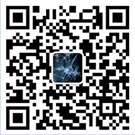


Jian-Guang Ni
Professor
Principal Investigator
Prof. Jianguang Ni completed doctoral training at Max Planck Society through the International Max Planck Research School (IMPRS) for Neural Circuits and Ernst Strüngmann Institute (ESI) for Neuroscience in 2017 (“Summa cum laude” from Goethe-Universität Frankfurt). From 2017-2021, he performed postdoctoral training at Boston University Center for Systems Neuroscience and later at Tufts University School of Medicine (Dept. of Neuroscience). His research work has been published in international journals including Neuron, PNAS and Cell Reports. In November of 2021, Prof. Ni joined Institutes of Brain Science/MOE Frontiers Center for Brain Science at Fudan University as tenure-track PI/Group Leader, where he leads the Neural Communication & Computing (NCC) group. Prof. Ni is currently supported by National Nature Science Foundation Major Program of China, National Program on Key Basic Research Project, and Program for High-Level Overseas Talents Introduction (Shanghai).
Contact Information
Address: 131 Dongan Road, Institutes of Brain Science, Fudan University, Shanghai China 200032
Tel: 021-54230118
Email:jguangni@@fudan.edu.cn
Research Directions
Neural Communication and Computing、Neuromodulation
Enrollment Major
Neurobiology
Research Work
On top of the brain connectome, cognitive functions emerge from integrating dynamic, interareal neuronal communications and neural computing at different spatio-temporal levels. Dysfunction of neural communication and computing often serves as biological hall-marks for many mental and cognitive disorders. Understanding the semantics, syntax and algorithms of neuronal communication with systems neuroscience approaches is believed to be the key to decipher the nature of human intelligence and cognition. By combining inter-disciplinary tools including in vivo high-density multi-channel recordings, calcium imaging, parametric behavior, machine learning & AI tools, we are investigating the following topics :
1. Neural dynamics of learning and memory, including the neural encoding and communication mechanisms.
2. Brain rhythms and neuronal synchronization.
3. Developing neuromodulation and brain-machine interface (BMI) tools for intervening neuronal communication.
Selected Publications
Li Y#, Tian JF#, Wei JF#, Wang QY#, Ge JX, Ni J*, Lu J*, Tai Y*(2025). Hippocampal Chandelier Cells Modulate Seizure Susceptibility and Severity. Advanced Science. (accepted)
Zheng JH#, Sun YQ#, Wang FH#, Xie ZY#, Wang QY, Peng JY, Ni J*(2024). Dynamic routing of theta-frequency synchrony in amygdalo-hippocampal-entorhinal circuit coordinates retrieval of competing memories. Neuroscience Bulletin. 41(4):713-718
Peng JY#, Qi XZ#, Yan Q#, Fan XJ#, Shen KL, Huang HW, Lu JH, Wang XQ, Fang XX, Mao L, Ni J*, Chen L*, Zhuang QX*(2023). Ameliorating parkinsonian motor dysfunction by targeting histamine receptors in entopeduncular nucleus–thalamus circuitry. Proc Natl Acad Sci USA. 120 (17): e2216247120
Lewis CM#*, Ni J#, Wunderle T, Jendritza P, Lazar A, Diester I, Fries P*(2021). Cortical gamma-band resonance preferentially transmits coherent input. Cell Reports. 35(5):109083
Ni J, Wunderle T, Lewis CM, Desimone R, Diester I, Fries P*(2016). Gamma-rhythmic gain modulation. Neuron. 92 (1):240-251







 Online Appointment
Online Appointment
